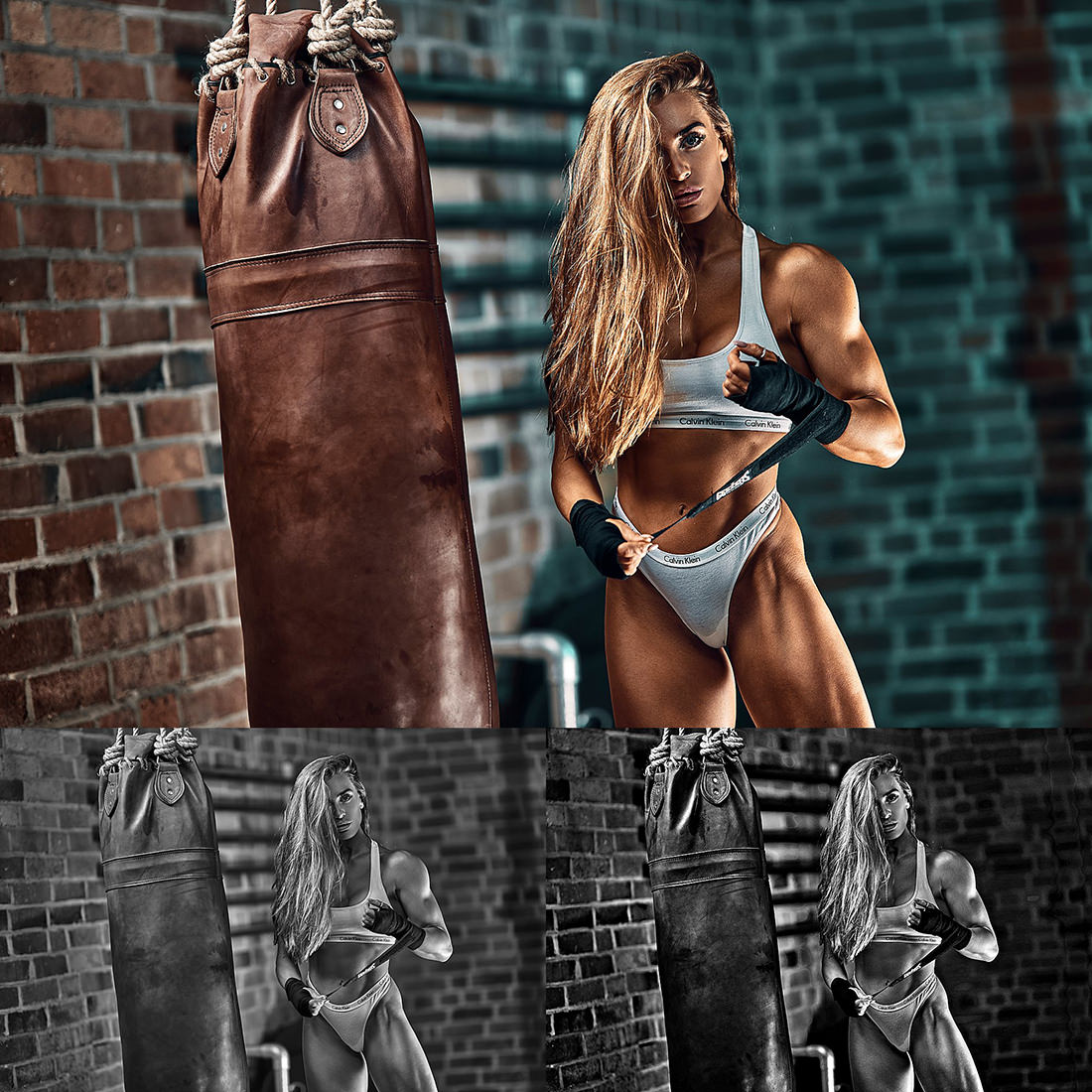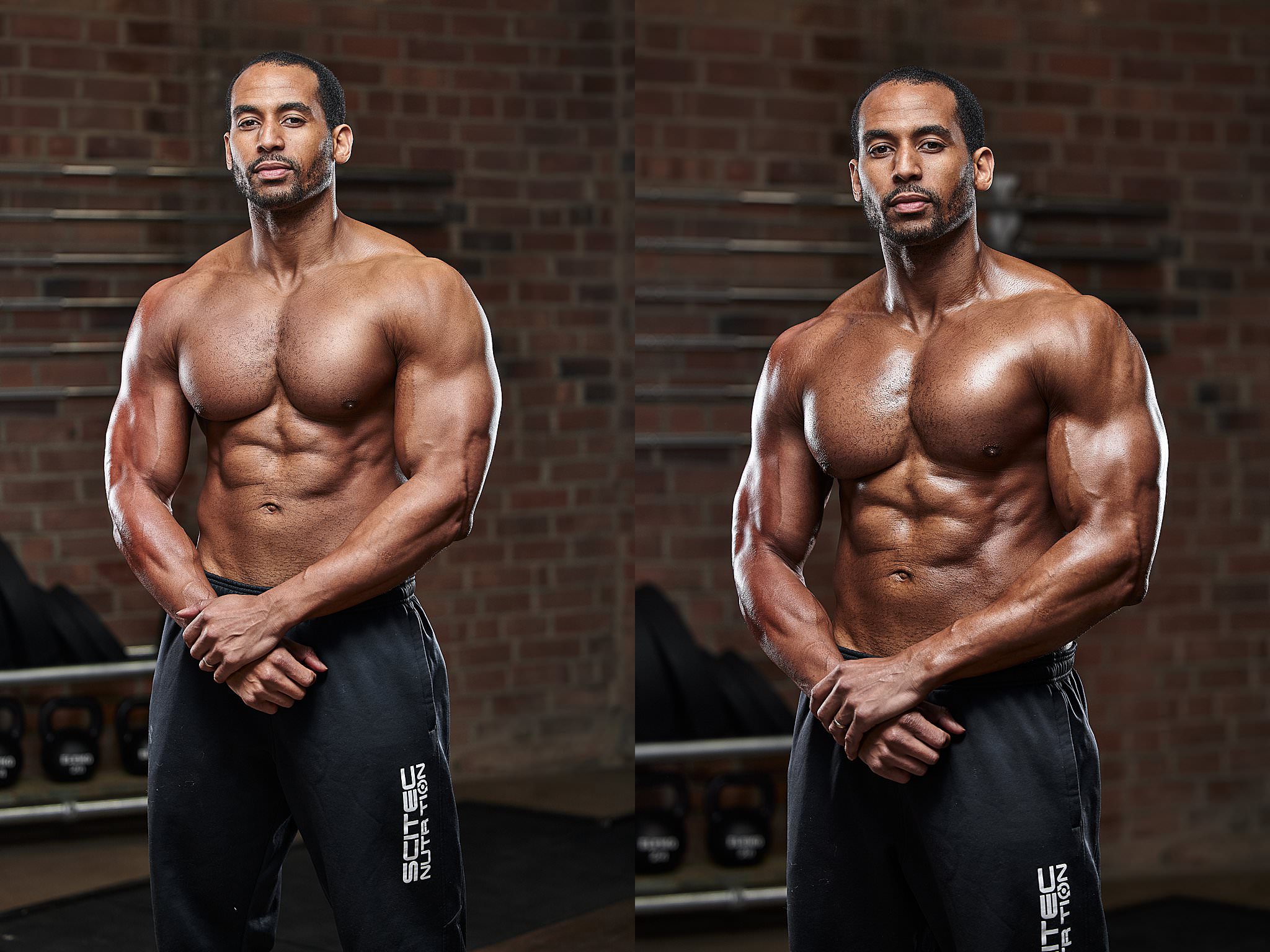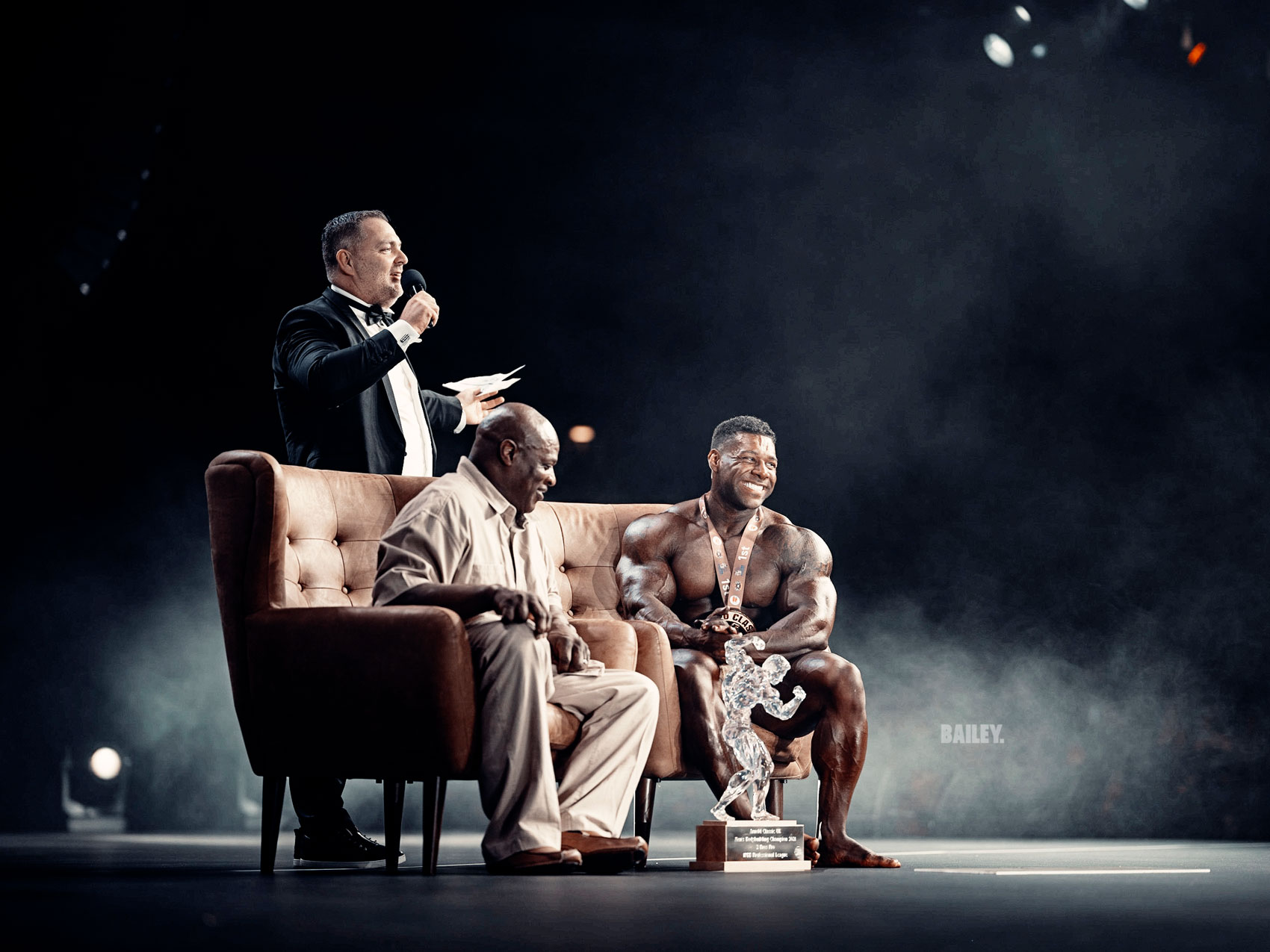MENU
You're used to seeing the world in full colour, so why does black and white imagery stand out so much?
There's a certain kind of romance I have with black and white photography and it astounds me that more fitness professionals and brands aren't enhancing their online media with it.
Converting a digital colour photo into black and white is more than simply desaturating the colours. My Bailey photography doesn't just drain a photo of colour without considering the image's original hues and who is of focus in the piece. If you simply up the contrast and degrade colours, the image can be totally devoid of tonal range, personality and emotion.
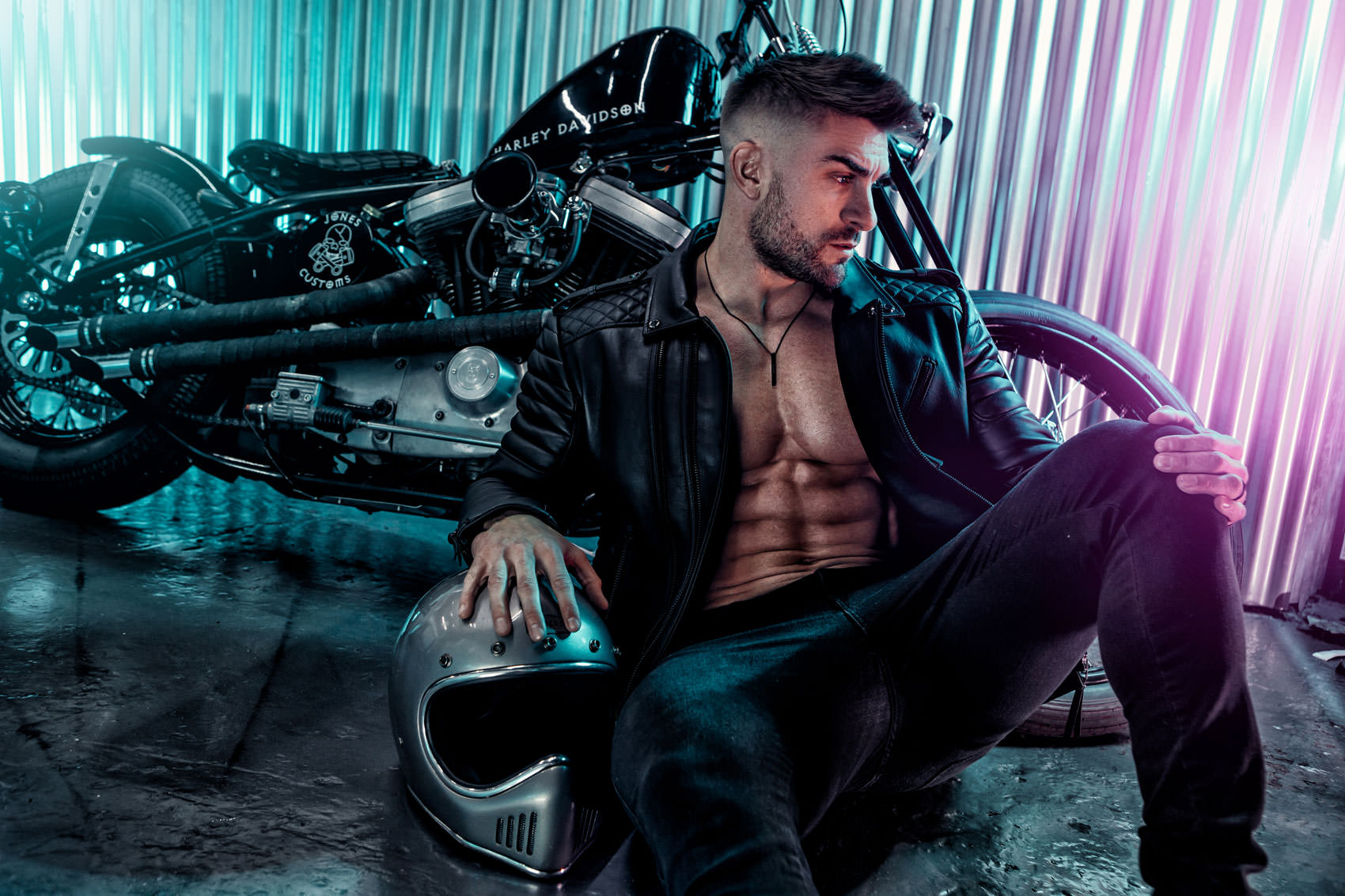
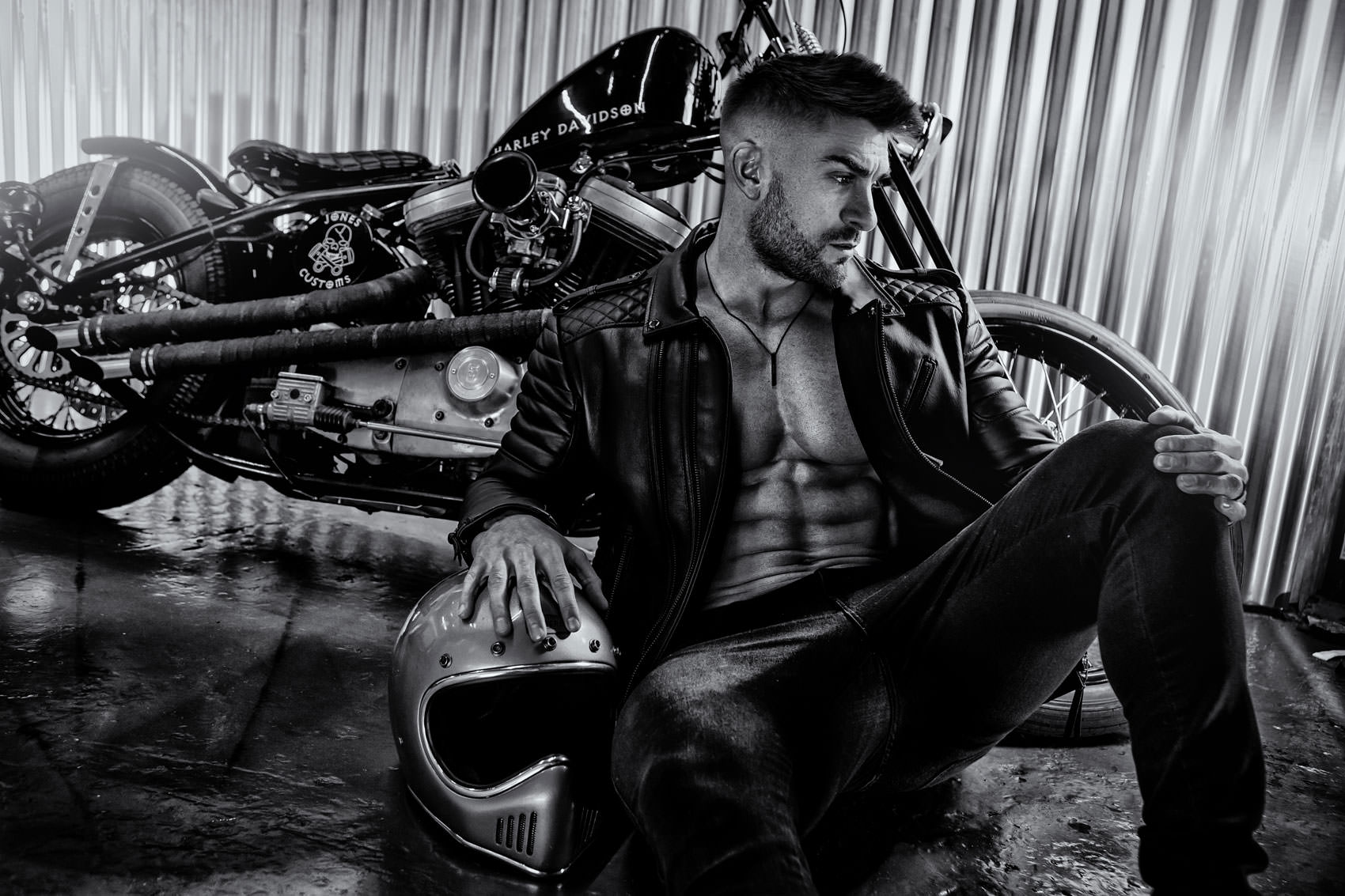
This is what B&W app filters or saturation sliders do for you and ultimately, this creates monochrome images with a boring, washed-out appearance.
What happens when we remove colour from an image? Use the black and white colour slider to see.
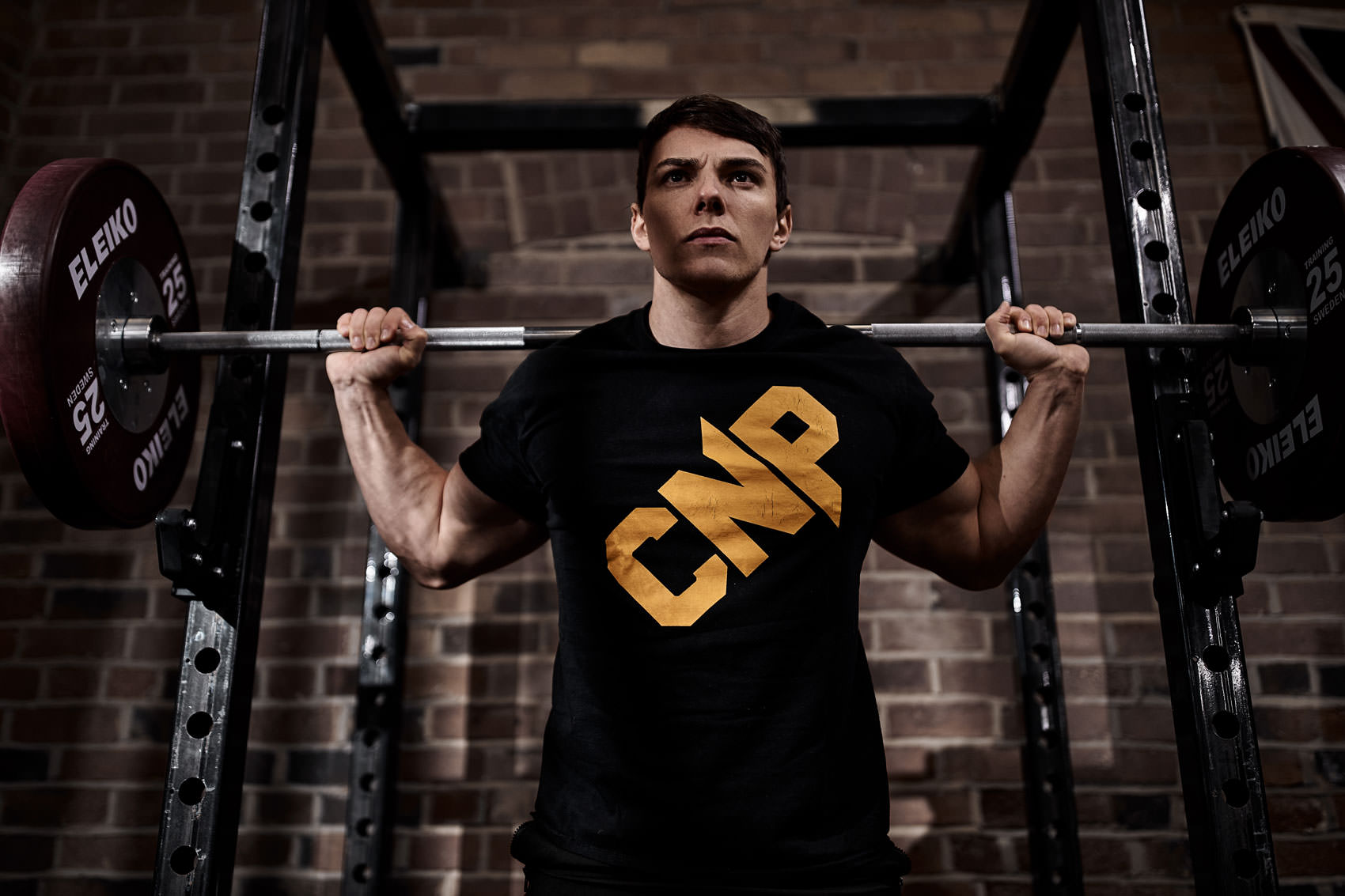
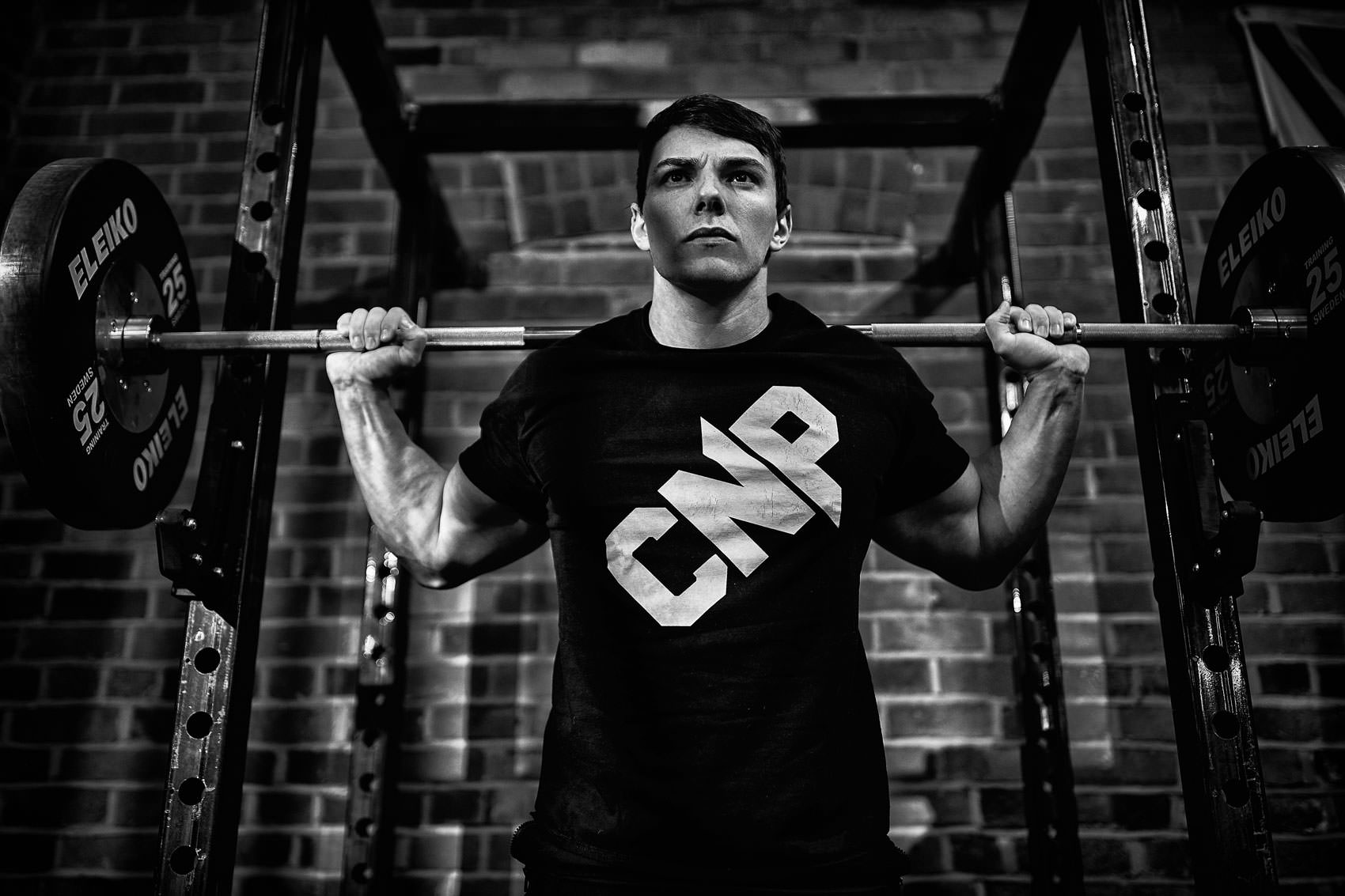
Why Use Black and White Photography?
There are many advantages to using black and white photography: it can look cleaner, have less distractions from your clear message and it can stand out more.
Psychologically, a part of our brain is triggered when it sees rich blacks and deep contrasts. It excites our brain to see a variance in tonal ranges for a change that are more glaringly obvious; this excitement draws the eye and focuses attention.
Black and white photography is timeless. It transcends time.
When you think of black and white photography, you probably associate it with historical images. It's also used a lot for storytelling in travel and street photography, and it's common in photographing religious events too.
Why do you think that is?
Is it perhaps because it commands a certain type of authority, testimony and recording status?
Monochrome is bold. It strengthens mood and emotions.
The removal of colour can also make it much harder to determine the original capture date of an image, making it almost an anti-record. In that sense, the image could always be relevant.
Why Should You Use Black and White Photos on Instagram?
Get sick of seeing the same types of images over and over on your Instagram feed? Think back to a scroll-stopping moment - what was it that made your thumb pause? For me, it's usually a smartly done black and white photo.
For anyone active on social media these days I would say the number one reason for requesting black and white conversions of your images is to repurpose images while keeping them looking fresh. Your audience won’t recognise them as they will see something different the second time around.
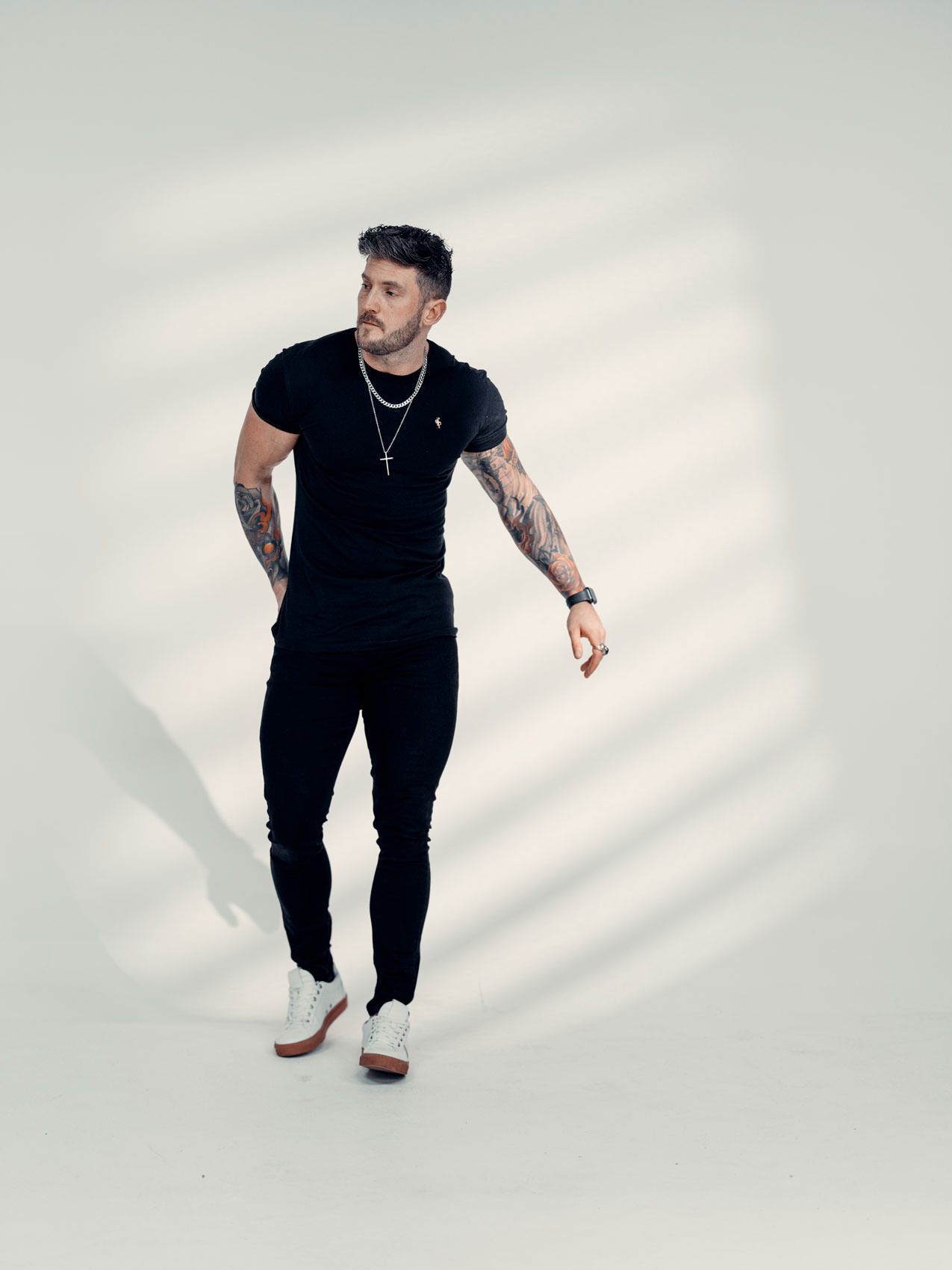
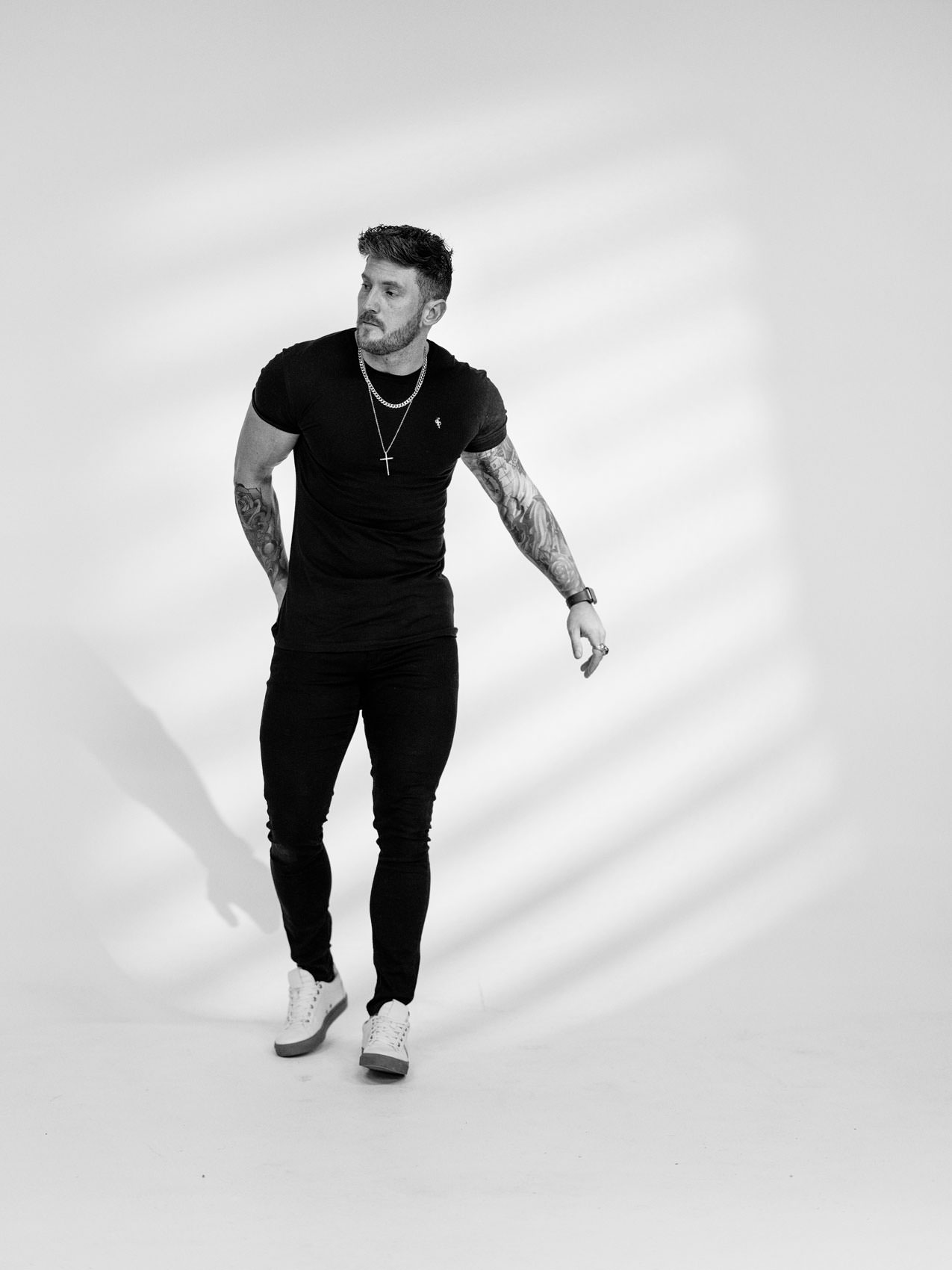
As you can see, studio white backdrop black and white photos can be quite beautiful in their simplicity.
When did Black and White Photography Start Being Used?
The original pioneers of photography shot in black and white because, of course, they had no other choice. So, you may be sat there thinking, "why go for something lesser when you can have full colour?".
Some people see black and white photography as photography in its purest form. Even when colour became introduced to the world of photography with the birth of the Kodachrome, artists, professionals and subjects still sought out black and white prints.
Take a look at the images below and play a quick game of photography spot the difference...
You See Things That Weren't There Before in Black and White Photography
What Does Removing Colour From a Photo Do?
Looking at the above image, you'll notice different tonalities in the subject's skin and other textures within the image. When you remove the colour, emphasis other compositional elements in the image draws the eye. You'll notice new lines, shapes, textures, contrasts and tones.
Remove colour from an image and you'll remove distractions
An image doesn't simply do well because you're shooting in a nice location or have a well-tuned physique in front of you. It's a combination of a wide number of elements, some of which can get lost or taken for granted when an image is viewed in full colour. This can be quite simply because you're so used to seeing in colour.
When I shoot in black and white, I challenge myself to really think about the shot setup even more deeply; I have to really pay attention to lighting (more so than usual), colour temperatures and colour casts. It's an important moment of self-reflection too to see if that image has form in itself or if it's propped up by the inclusion of colour.
Does Every Image Look Good in Black and White?
Some photos look incredible in black and white whilst some images just look better in the original. Obviously, if I'm shooting with colour gels or other interesting manipulations, the original image can look best.
So, look at all the elements and deduce what else you have to work with, besides colour.

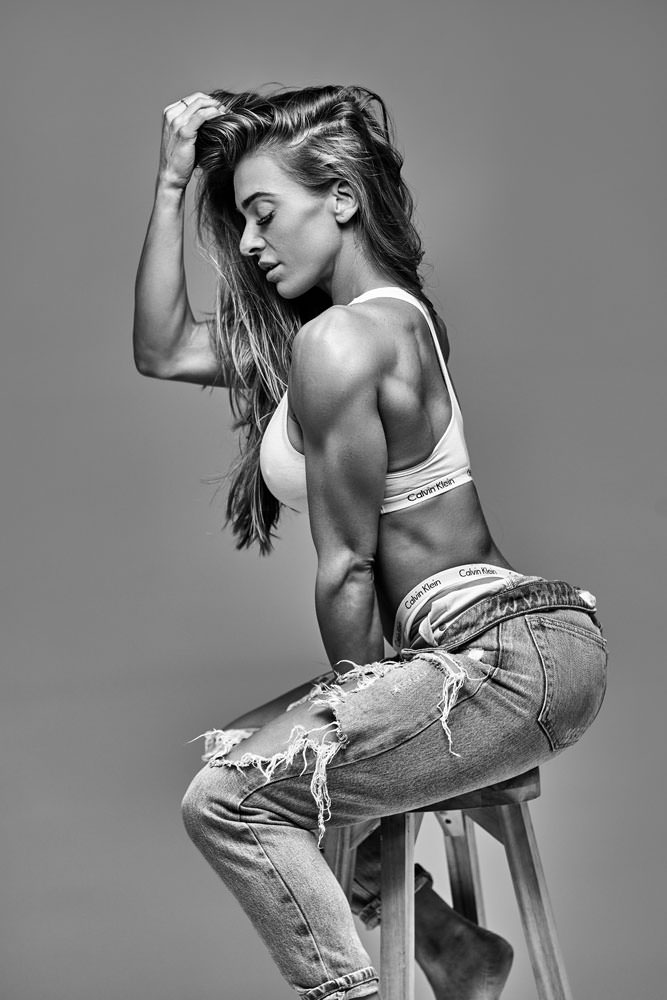
Share this story
